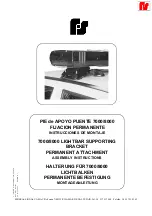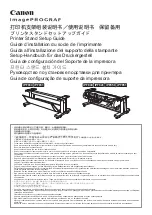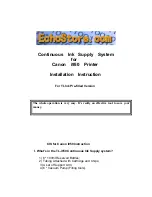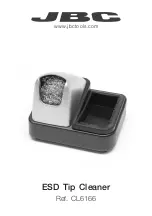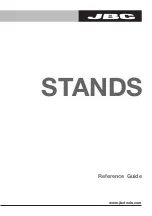
6
3
4
3
4
Fig.2
Fig.4
Fig.5
Fig.3
-
4
-
2. Connect red clip (3) to POSITIVE (POS, P, +) battery post. Rock clip back
and forth to make good connection. (Fig. 2)
3. Connect black clip (4) to NEGATIVE (NEG, N, -) battery post. Rock clip
back and forth to make a good connection. (Fig. 3)
WARNING:
Do not face battery when making final connection.
4. Select charging voltage by switching the charging voltage selector (1)
5. Select charging current by switching the charging current selector (2)
6. Plug charger AC cord into power outlet.
WARNING:
Be sure area around battery is well ventilated while battery is being charged. Gas can be forcefully blown
away by using a piece of cardboard or other non-metallic material as a fan.
7. The charging time depends on the charge status of the battery. If the battery is fully discharged, the approximate charging
time can be calculated using the following formula :
Battery capacity in Ah
Charging time/h =
Amp. (arithmetic charging current)
24 Ah
Example =
= 9.6 h max.
2,5 A
A high initial current, approximately equal to the rated current will flow in a normally discharged battery. As the charging
time increases, the charging current will fall.
Old batteries for which the charging current does not fall ara suffering form a defect, such as a cell short circuit or ageing
damage.
8. When battery is fully charged, unplug charger from AC power source.
9. When battery is fully charged and charger is unplugged, firstly remove clip
from NEGATIVE (NEG, N, -) battery post (Fig. 4), and then remove clip
from Positive (POS, P, +) battery post (Fig. 5), in that order.
SECURITY
Wrong connection of poles or short-circuit would destroy the built-in knife fuse (6).
It must be replaced with a fresh knife fuse of the same value.
On extreme overload, or overheat by a wrong use, the thermal protector will switch
off itself. The charger will switch on again after cooled down sufficiently.
MAINTENANCE
Very little maintenance is required for the battery charger. Follow common sense in wiping the charger clean and store in a
clean, dry area.
1. After use, wipe all battery corrosion and other dirt or oil from clip, cord, and the charger case. Use a dry cloth.
2. Coil charger cords to prevent damage.
3. Have any cracked or frayed cords replaced by a qualified professional.
4. Store battery charger in a clean, dry area.









